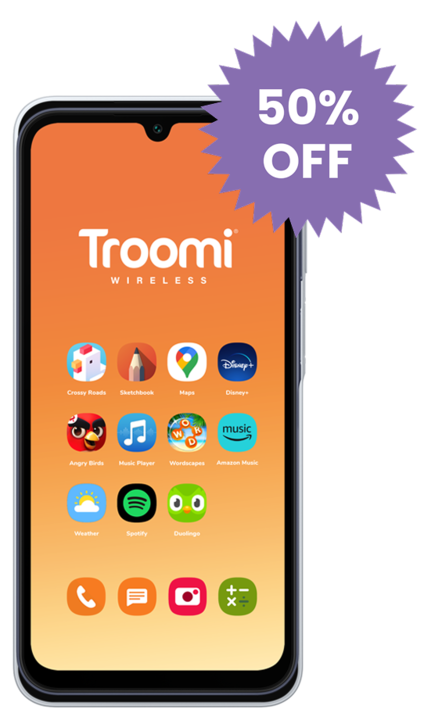In the modern digital age, screens have become an integral part of our lives. From smartphones and tablets to computers and TVs, we are constantly exposed to digital devices. While technology has revolutionized the way we live, work, and communicate, excessive time on screens can have detrimental effects on our physical and mental well-being. In this post, we will explore the benefits of reducing screen time and provide practical tips for managing digital devices across all age groups.
The Rise of Screen Time
Recent studies have shown that the average person spends a significant portion of their day in front of screens. Children and teenagers are particularly vulnerable, with many spending more time on digital devices than they do sleeping or engaging in physical activities. This surge in time on screens has been linked to various health concerns, including:
- Eye strain and vision problems
- Poor posture and neck pain
- Sleep disturbances
- Sedentary lifestyle and obesity
- Impaired social skills and communication
- Decreased attention span and cognitive development
Benefits of Reducing Screen Time
By consciously limiting our exposure to digital devices, we can experience numerous benefits that positively impact our overall well-being. Let’s explore how reducing time on screens can benefit different age groups:
Children (Ages 0-12)
- Improved cognitive development and creativity
- Enhanced social skills and empathy
- Better sleep quality and duration
- Increased physical activity and healthy growth
Teenagers (Ages 13-18)
- Reduced risk of depression and anxiety
- Improved academic performance and concentration
- Enhanced interpersonal relationships and communication skills
- Increased engagement in hobbies and extracurricular activities
Adults (Ages 18+)
- Improved work-life balance and reduced stress levels
- Enhanced productivity and focus
- Better sleep hygiene and reduced risk of insomnia
- Increased time for self-care, hobbies, and personal growth
Practical Tips for Managing Screen Time
Now that we understand the benefits of reducing screen time, let’s explore some practical strategies for managing digital devices:
- Set Boundaries: Establish specific times and places where screens are not allowed, such as during meals or in the bedroom.
- Create a Schedule: Allocate designated time slots for screen-based activities and stick to them.
- Engage in Alternative Activities: Encourage outdoor play, reading, crafts, or face-to-face interactions as alternatives to screen time.
- Use Parental Controls: Utilize built-in features or third-party apps to monitor and limit screen time for children and teenagers.
- Lead by Example: As adults, model healthy screen habits and prioritize face-to-face interactions.
- Implement Tech-Free Days: Designate one day a week as a screen-free day to engage in other activities and connect with loved ones.
Success Stories
Many individuals and families have successfully reduced their screen time and experienced the benefits firsthand. Here are a few inspiring stories:
- The Smith family implemented a “no screens during meals” rule and noticed improved communication and bonding during family dinners.
- Sarah, a college student, started using a productivity app to limit her social media usage and saw a significant improvement in her grades and overall well-being.
- The Johnson family instituted a weekly “tech-free day” and discovered new hobbies and interests they could enjoy together.
The Role of Technology
While excessive time on screens can be problematic, technology itself is not the enemy. In fact, many digital tools and apps can help us manage our screen time effectively. Some popular options include:
- Screen Time (iOS) and Digital Wellbeing (Android): Built-in features that allow users to track and limit their device usage.
- Forest: A gamified app that encourages users to stay focused by planting virtual trees during screen-free periods.
- Moment: An app that provides detailed insights into your device usage and helps set goals to reduce screen time.
Conclusion
In our digital world, finding a healthy balance between screen time and other activities is crucial for our overall well-being. By understanding the benefits of reducing screen time and implementing practical strategies to manage digital devices, we can cultivate a more mindful and fulfilling relationship with technology. Remember, it’s not about eliminating screens entirely but rather about using them in moderation and prioritizing human connections and personal growth. By taking control of our screen time, we can unlock the full potential of our digital devices while maintaining a healthy and balanced lifestyle. Moreover, for parents concerned about the impact of excessive screen time on their children, Troomi phones and watches offer a solution that allows kids to explore the outdoors and be kids without the distractions and safety concerns often associated with traditional smartphones. With features designed to promote safety and limit distractions, Troomi devices provide peace of mind for parents while encouraging children to engage in physical activity, explore their surroundings, and foster creativity away from screens.
Interested in learning more? Click here.


